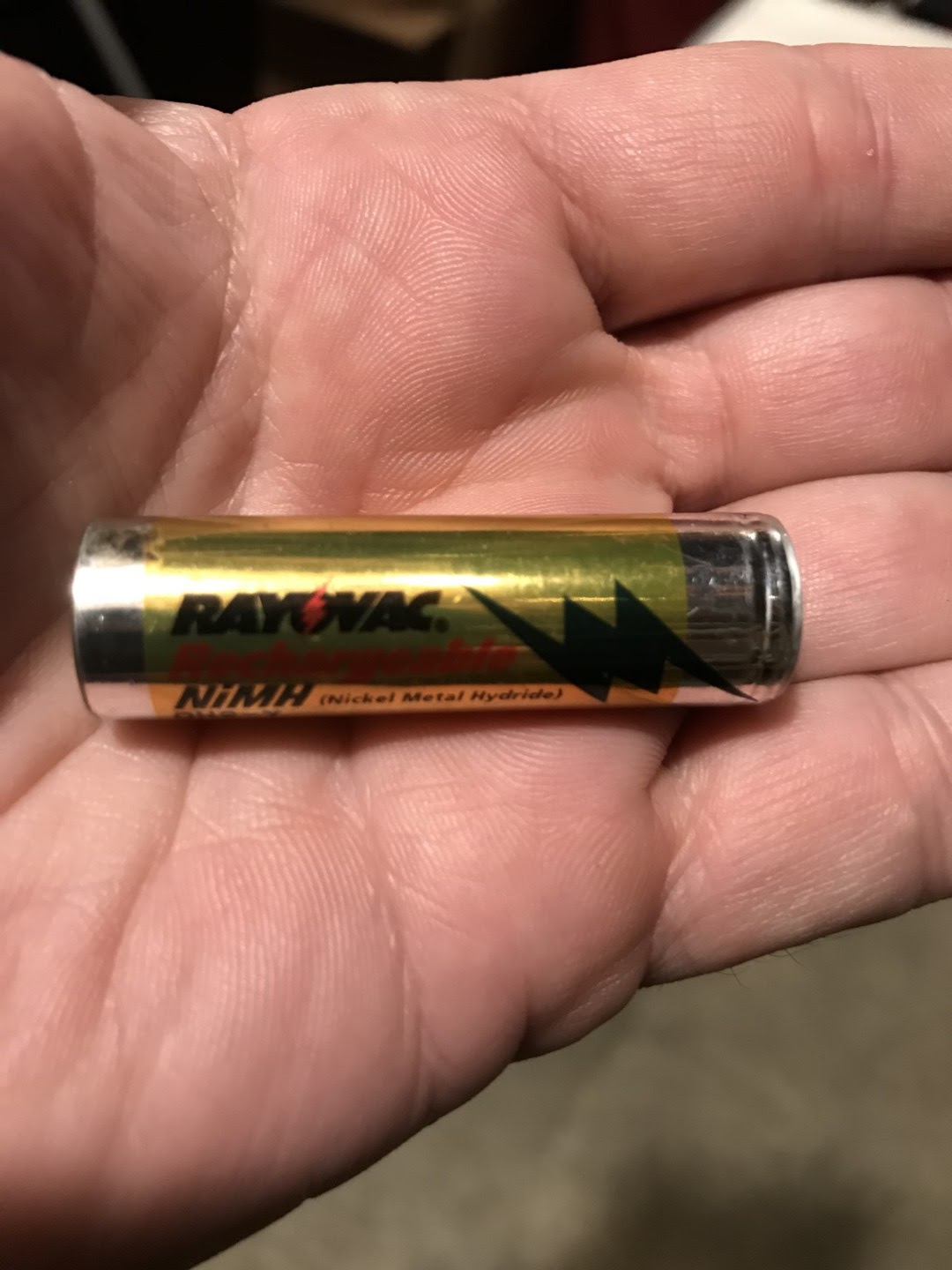Let’s talk batteries

It’s time to revisit the subject of batteries.
Back in the early history of this blog (2006? I’ve been doing this that long?) I put up a post about “Running on batteries“. It had some basic info about NiMh and Li-Ion batteries. Reading it again just now, it’s some very basic info. Later that year, I put up another post on “Storing batteries“, where I passed along some more information I had found. I stored up some NiMh batteries in AA and AAA and promptly skipped off to something else.
Fast forward to the end of 2019.
I’ve been picking up the odd “dead” laptop batteries, which I break down into their component 18650 batteries. I then test them, using an inexpensive charger/tester. Any that pass the test, which means they don’t overheat when charging and have roughly 2000 mAh of capacity left, are deemed useable for future projects. These batteries still have considerable use in them, despite what some might say. They’re great for modifying UPSes, building an e-bike battery or, for the truly ambitious, building a DIY Tesla-type powerwall.
Hey, they’re free. New cells are a minimum of $3.50 each in quantity for a name brand. What I get is a mix of name and no-name cells. I’ve been salvaging cells for about a year now. If I can tap a new source of supply, I should have enough for a decent size powerwall in a year or so.

When working on the testing, it occurred to me that I ought to see how those long stored NiMh batteries were holding up.
So I pulled out the 3 4-packs of AA and AAA batteries. What you see on the left is a AA, capacity 1600 mAh per the package. These were stored in roughly 2006-7.
I’ve tested all the AAs and 4 AAAs so far. The results are less than encouraging. Of the 12 AAs, only one would hold close to the rated 1600 mAh. The remainder ranged from 82-400-ish mAh. Of the AAAs tested, all of them are in that same 82-400-ish range.
I have some of another brand to test, but I honestly don’t expect substantially different results. I have a few old salvaged NiCads, and I expect them to be goners as well.
I also have some Eneloop batteries from back when they were made by Sanyo. I have higher hopes for these, but we’ll see. Word on that in a few days.
So, not a disaster, but disappointing, given I had stored these as prescribed in 2006. So what is the current thinking on the storage of NiMh and Li batteries? One source quotes a battery manufacturer who states that NiMh batteries can be stored in “any state of charge” and should be recharged once a year for long-term storage. They also have advice on storage conditions. Another source goes into more depth, but basically the same advice. Further sources agree with the first two. Looks like storage of NiMh batteries will take a certain amount of effort, and it may not be worth it. I may just stick with a group of Eneloops or similar that I keep charged up for things like remote controls, wireless mice and the like., However, you have to be wary because there areproblems with counterfeit Eneloops.
Lithium batteries, such as the 18650, store far better. “There is virtually no self-discharge below about 4.0V at 20C (68F); storing at 3.7V yields amazing longevity for most Li-ion systems.” This matches what I’m seeing on these old laptop cells-they seem to hit 3.7 volts and just sit there for an inordinate amount of time. Of course, you have to watch out which lithiums you buy and from where, because counterfeiting. This has been a problem for years with 18650s.
Let’s move on from these chemistries and talk about alkaline batteries. Short version-they suck. They will schmoo in your devices years before they expire. My quarterly check found one flashlight where they were just beginning to seep. Nothing got on the light itself and it’s fine. I found another light that is ruined-a single AA Fenix light that the battery is now stuck in. My night vision monocular is in between these two. Fortunately it is well designed and took no damage, even though the schmoo had leaked quite a bit.
I’ve found that the big name batteries with the metallic-colored top are the worst (and now I find that they have a counterfeiting problem too), with bunny batteries doing somewhat better. Oddly enough, the cheap ones, especially Chinese no-names, never freaking leak. Go figure. I’m going to try some of the Amazon-branded ones and see if they are worth anything.
Oh, and coin cells? Beware of counterfeits there as well. Best advice I’ve found is to buy name brands from someone reputable. I’m using Amazon, but be careful you get yours from Amazon, not a third-party seller.
For some actual testing information, check out Project Farm on YouTube. He has a good recent test on alkalines. He also has a good recent test on rechargables (and a part two on the same subject) as well as a test of rechargables after 1 year. And a test on the portable jump start boxes. Lots of other useful stuff as well. Not lab quality testing, but probably good enough.
And now I’m going to skip off to something else.